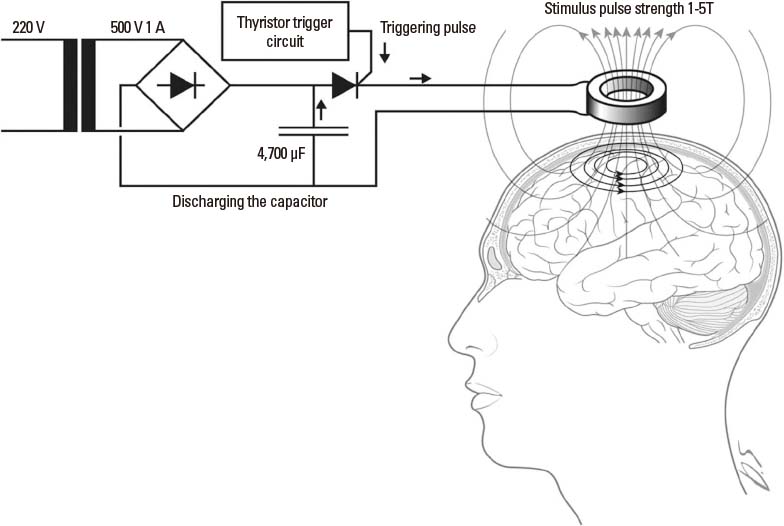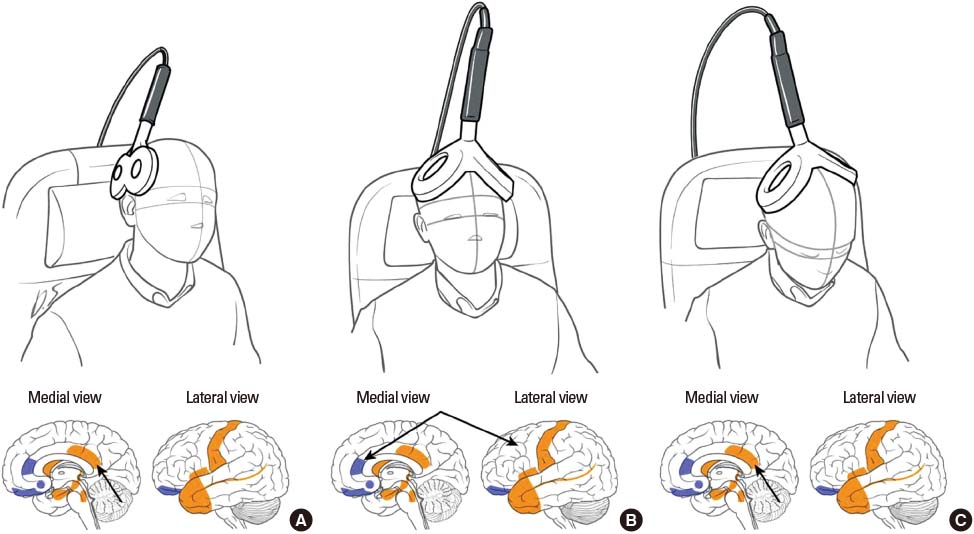Hanyang Med Rev.
2016 May;36(2):136-141. 10.7599/hmr.2016.36.2.136.
Neuromodulation for the Treatment of Tinnitus
- Affiliations
-
- 1Department of Otorhinolaryngology, Yonsei University College of Medicine, Seoul, Korea. ismoonmd@yuhs.ac
- KMID: 2164673
- DOI: http://doi.org/10.7599/hmr.2016.36.2.136
Abstract
- Tinnitus is a perception of sounds in the absence of external noise. Tinnitus can affect an individual's life, prevent productive work or impair the quality of life. There are 2 types of tinnitus, objective and subjective, the latter being the most challenging of hearing disorders. Tinnitus has various forms and it can be difficult to relate a specific event with the appearance of tinnitus. Moreover, detection of tinnitus and evaluation of its severity is impossible. Therefore, treatment is usually based on the patient's own assessment. To date, various forms of treatment have been administered with minimal success. Many different treatments have been attempted and then discontinued. The treatment goal of eliminating symptoms for severe tinnitus is rarely achieved. However, some symptoms of tinnitus can often be reduced to improve the patient's quality of life allowing him or her to work despite residual effects of the disorder. In the present study we evaluated electrical stimulation, including transcranial direct current stimulation, transcranial magnetic stimulation for the treatment of tinnitus.
Keyword
MeSH Terms
Figure
Cited by 1 articles
-
Tinnitus: Overview
Chul Won Park
Hanyang Med Rev. 2016;36(2):79-80. doi: 10.7599/hmr.2016.36.2.79.
Reference
-
1. Henry JA, Dennis KC, Schechter MA. General review of tinnitus: prevalence, mechanisms, effects, and management. J Speech Lang Hear Res. 2005; 48:1204–1235.2. Feldmann H. Suppression of tinnitus by electrical stimulation: a contribution to the history of medicine. J Laryngol Otol Suppl. 1986; 9:123–124.
Article3. Graham JM, Hazell JW. Electrical stimulation of the human cochlea using a transtympanic electrode. Br J Audiol. 1977; 11:59–62.
Article4. House WF. Cochlear implants. Ann Otol Rhinol Laryngol. 1976; 85:suppl 27. 1–93.
Article5. Okusa M, Shiraishi T, Kubo T, Matsunaga T. Tinnitus suppression by electrical promontory stimulation in sensorineural deaf patients. Acta Otolaryngol Suppl. 1993; 501:54–58.
Article6. Tyler RS, Rubinstein J, Pan T, Chang SA, Gogel SA, Gehringer A, et al. Electrical Stimulation of the Cochlea to Reduce Tinnitus. Semin Hear. 2008; 29:326–332.
Article7. Portmann M, Cazals Y, Negrevergne M, Aran JM. Temporary tinnitus suppression in man through electrical stimulation of the cochlea. Acta Otolaryngol. 1979; 87:294–299.
Article8. Volta A. On the electricity excited by mere contact of conducting substances of different kinds. Trans R Soc Phil. 1800; 90:403–431.9. Di Nardo W, Cianfrone F, Scorpecci A, Cantore I, Giannantonio S, Paludetti G. Transtympanic electrical stimulation for immediate and long-term tinnitus suppression. Int Tinnitus J. 2009; 15:100–106.10. Rubinstein JT, Tyler RS, Johnson A, Brown CJ. Electrical suppression of tinnitus with high-rate pulse trains. Otol Neurotol. 2003; 24:478–485.
Article11. Van de Heyning P, Vermeire K, Diebl M, Nopp P, Anderson I, De Ridder D. Incapacitating unilateral tinnitus in single-sided deafness treated by cochlear implantation. Ann Otol Rhinol Laryngol. 2008; 117:645–652.
Article12. Jastreboff PJ, Jastreboff MM. Tinnitus Retraining Therapy (TRT) as a method for treatment of tinnitus and hyperacusis patients. J Am Acad Audiol. 2000; 11:162–177.13. Vanneste S, De Ridder D. Noninvasive and invasive neuromodulation for the treatment of tinnitus: an overview. Neuromodulation. 2012; 15:350–360.
Article14. Antal A, Kincses TZ, Nitsche MA, Bartfai O, Paulus W. Excitability changes induced in the human primary visual cortex by transcranial direct current stimulation: direct electrophysiological evidence. Invest Ophthalmol Vis Sci. 2004; 45:702–707.
Article15. Bindman LJ, Lippold OC, Redfearn JW. Long-lasting changes in the level of the electrical activity of the cerebral cortex produced bypolarizing currents. Nature. 1962; 196:584–585.
Article16. Iyer MB, Mattu U, Grafman J, Lomarev M, Sato S, Wassermann EM. Safety and cognitive effect of frontal DC brain polarization in healthy individuals. Neurology. 2005; 64:872–875.
Article17. Nitsche MA, Seeber A, Frommann K, Klein CC, Rochford C, Nitsche MS, et al. Modulating parameters of excitability during and after transcranial direct current stimulation of the human motor cortex. J Physiol. 2005; 568:291–303.
Article18. Garin P, Gilain C, Van Damme JP, de Fays K, Jamart J, Ossemann M, et al. Short- and long-lasting tinnitus relief induced by transcranial direct current stimulation. J Neurol. 2011; 258:1940–1948.
Article19. Vanneste S, Plazier M, Ost J, van der Loo E, Van de Heyning P, De Ridder D. Bilateral dorsolateral prefrontal cortex modulation for tinnitus by transcranial direct current stimulation: a preliminary clinical study. Exp Brain Res. 2010; 202:779–785.
Article20. Faber M, Vanneste S, Fregni F, De Ridder D. Top down prefrontal affective modulation of tinnitus with multiple sessions of tDCS of dorsolateral prefrontal cortex. Brain Stimul. 2012; 5:492–498.
Article21. Frank E, Schecklmann M, Landgrebe M, Burger J, Kreuzer P, Poeppl TB, et al. Treatment of chronic tinnitus with repeated sessions of prefrontal transcranial direct current stimulation: outcomes from an open-label pilot study. J Neurol. 2012; 259:327–333.
Article22. Parazzini M, Fiocchi S, Ravazzani P. Electric field and current density distribution in an anatomical head model during transcranial direct current stimulation for tinnitus treatment. Bioelectromagnetics. 2012; 33:476–487.
Article23. Fregni F, Marcondes R, Boggio PS, Marcolin MA, Rigonatti SP, Sanchez TG, et al. Transient tinnitus suppression induced by repetitive transcranial magnetic stimulation and transcranial direct current stimulation. Eur J Neurol. 2006; 13:996–1001.
Article24. Nitsche MA, Cohen LG, Wassermann EM, Priori A, Lang N, Antal A, et al. Transcranial direct current stimulation: state of the art 2008. Brain Stimul. 2008; 1:206–223.
Article25. Ridding MC, Rothwell JC. Is there a future for therapeutic use of transcranial magnetic stimulation? Nat Rev Neurosci. 2007; 8:559–567.
Article26. Chen R, Classen J, Gerloff C, Celnik P, Wassermann EM, Hallett M, et al. Depression of motor cortex excitability by low-frequency transcranial magnetic stimulation. Neurology. 1997; 48:1398–1403.
Article27. Pascual-Leone A, Valls-Sole J, Wassermann EM, Hallett M. Responses to rapid-rate transcranial magnetic stimulation of the human motor cortex. Brain. 1994; 117(Pt 4):847–858.
Article28. Theodoroff SM, Folmer RL. Repetitive transcranial magnetic stimulation as a treatment for chronic tinnitus: a critical review. Otol Neurotol. 2013; 34:199–208.
Article29. Eichhammer P, Kleinjung T, Landgrebe M, Hajak G, Langguth B. TMS for treatment of chronic tinnitus: neurobiological effects. Prog Brain Res. 2007; 166:369–375.30. Eichhammer P, Langguth B, Marienhagen J, Kleinjung T, Hajak G. Neuronavigated repetitive transcranial magnetic stimulation in patients with tinnitus: a short case series. Biol Psychiatry. 2003; 54:862–865.
Article31. Moller AR. Tinnitus: presence and future. Prog Brain Res. 2007; 166:3–16.32. Eichhammer P, Hajak G, Kleinjung T, Landgrebe M, Langguth B. Functional imaging of chronic tinnitus: the use of positron emission tomography. Prog Brain Res. 2007; 166:83–88.
Article33. Kleinjung T, Eichhammer P, Langguth B, Jacob P, Marienhagen J, Hajak G, et al. Long-term effects of repetitive transcranial magnetic stimulation (rTMS) in patients with chronic tinnitus. Otolaryngol Head Neck Surg. 2005; 132:566–569.
Article34. Langguth B, Eichhammer P, Wiegand R, Marienhegen J, Maenner P, Jacob P, et al. Neuronavigated rTMS in a patient with chronic tinnitus. Effects of 4 weeks treatment. Neuroreport. 2003; 14:977–980.
Article35. Mennemeier M, Chelette KC, Allen S, Bartel TB, Triggs W, Kimbrell T, et al. Variable changes in PET activity before and after rTMS treatment for tinnitus. Laryngoscope. 2011; 121:815–822.
Article36. Rossi S, De Capua A, Ulivelli M, Bartalini S, Falzarano V, Filippone G, et al. Effects of repetitive transcranial magnetic stimulation on chronic tinnitus: a randomised, crossover, double blind, placebo controlled study. J Neurol Neurosurg Psychiatry. 2007; 78:857–863.
Article37. Khedr EM, Rothwell JC, Ahmed MA, El-Atar A. Effect of daily repetitive transcranial magnetic stimulation for treatment of tinnitus: comparison of different stimulus frequencies. J Neurol Neurosurg Psychiatry. 2008; 79:212–215.
Article38. Anders M, Dvorakova J, Rathova L, Havrankova P, Pelcova P, Vaneckova M, et al. Efficacy of repetitive transcranial magnetic stimulation for the treatment of refractory chronic tinnitus: a randomized, placebo controlled study. Neuro Endocrinol Lett. 2010; 31:238–249.39. Marcondes RA, Sanchez TG, Kii MA, Ono CR, Buchpiguel CA, Langguth B, et al. Repetitive transcranial magnetic stimulation improve tinnitus in normal hearing patients: a double-blind controlled, clinical and neuroimaging outcome study. Eur J Neurol. 2010; 17:38–44.
Article40. Kim HJ, Kim DY, Kim HI, Oh HS, Sim NS, Moon IS. Long-term effects of repetitive transcranial magnetic stimulation in unilateral tinnitus. Laryngoscope. 2014; 124:2155–2160.
Article41. Nahas Z, Kozel FA, Li X, Anderson B, George MS. Left prefrontal transcranial magnetic stimulation (TMS) treatment of depression in bipolar affective disorder: a pilot study of acute safety and efficacy. Bipolar Disord. 2003; 5:40–47.
Article42. Lehner A, Schecklmann M, Poeppl TB, Kreuzer PM, Vielsmeier V, Rupprecht R, et al. Multisite rTMS for the treatment of chronic tinnitus: stimulation of the cortical tinnitus network--a pilot study. Brain Topogr. 2013; 26:501–510.
Article43. Kleinjung T, Eichhammer P, Landgrebe M, Sand P, Hajak G, Steffens T, et al. Combined temporal and prefrontal transcranial magnetic stimulation for tinnitus treatment: a pilot study. Otolaryngol Head Neck Surg. 2008; 138:497–501.
Article44. Park S, Park HJ, Kyeong SH, Moon IS, Kim M, Kim HN, et al. Combined rTMS to the auditory cortex and prefrontal cortex for tinnitus control in patients with depression: a pilot study. Acta Otolaryngol. 2013; 133:600–606.
Article45. Kreuzer PM, Landgrebe M, Schecklmann M, Poeppl TB, Vielsmeier V, Hajak G, et al. Can Temporal Repetitive Transcranial Magnetic Stimulation be Enhanced by Targeting Affective Components of Tinnitus with Frontal rTMS? A Randomized Controlled Pilot Trial. Front Syst Neurosci. 2011; 5:88.
Article46. Wassermann EM. Risk and safety of repetitive transcranial magnetic stimulation: report and suggested guidelines from the International Workshop on the Safety of Repetitive Transcranial Magnetic Stimulation, June 5-7, 1996. Electroencephalogr Clin Neurophysiol. 1998; 108:1–16.
Article47. Rossi S, Hallett M, Rossini PM, Pascual-Leone A. Safety, ethical considerations, and application guidelines for the use of transcranial magnetic stimulation in clinical practice and research. Clin Neurophysiol. 2009; 120:2008–2039.
Article



